8 Towards Independence
1754-1776
Jim Ross-Nazzal, PhD and Students
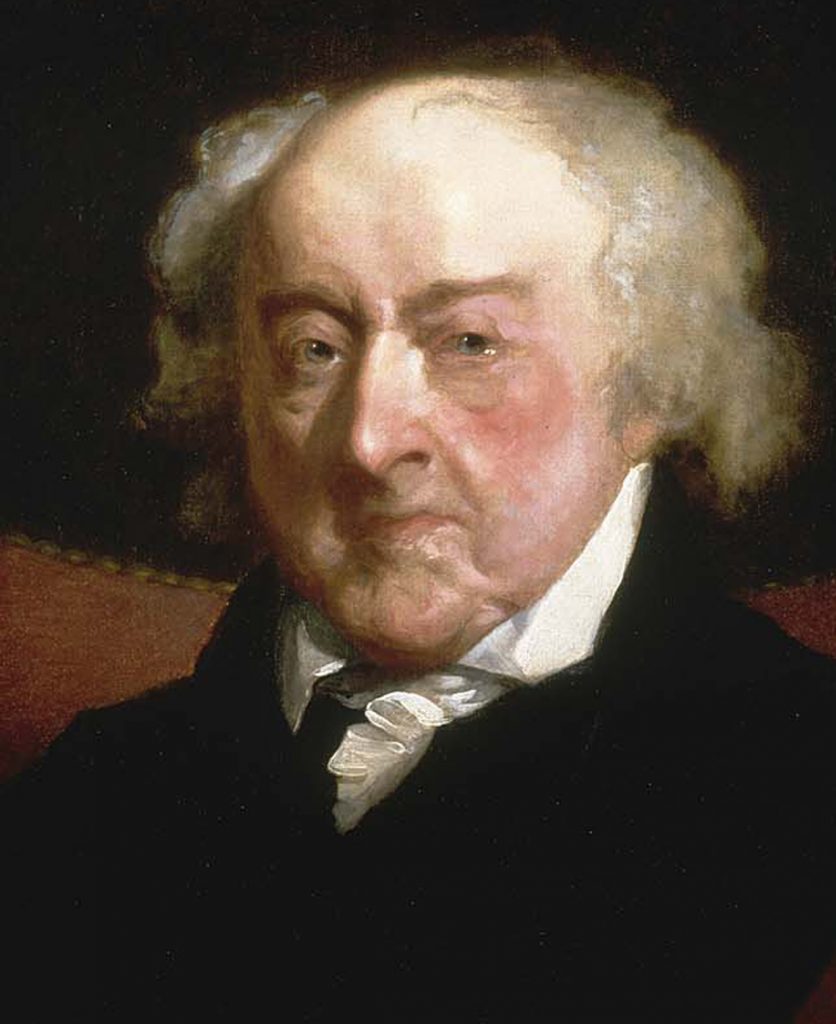
The American Revolution and the War for Independence. People use these phrases interchangeably as if they mean the same thing. However, a revolution and a war are two inherently different things. Afghanistan, Iraq, Vietnam, Korea, World War II, World War I, and the Philippines, were wars. The fighting between 1861 and 1865 was a war. The fighting between 1776 and 1781 was a war. War is easy, said John Adams, revolution is hard. What came after 1865 was a revolution. How to transform the economy, society, politics, and the judicial system from one based on slavery to one based on free labor. What came after 1781 was a revolution. What did it mean to be “These United States” and what did it mean to be an “American”? Those ideas evolved through the adoption of the Thirteenth, Fourteenth, and Fifteenth amendments. This chapter looks at the road towards independence. The road to war.[1]
Existence of the Colonies
The English view was that the colonies were controlled by Parliament and England had unlimited control over the colonies. Those elected assemblies in the colonies were to serve the crown (not for self-government). Economically, the colonies existed due to mercantilism: to provide resources to England and to open new markets for English goods. Products such as sugar, tobacco, lumber, fish, meat, furs, rice, indigo and rum were all important under the English rubric of mercantilism. And so Parliament had to control colonial imports and exports, which Parliament did through the Navigation Acts, which were enacted roughly between 1651 and 1696. Over time the Acts became more restrictive. For example, in 1660, the Navigation Acts limited the items that could go directly to the colonies but by 1663 all good had to go through England before entering the colonies, at which time the goods could be taxed and goods exported from the colonies to England could be taxed. And some products were not allowed outside of the Empire such as tobacco, sugar, indigo and eventually cotton.
The colonial view was that the colonies existed for the betterment of the colonists. They governed themselves. They maintained elected assemblies from voting based on male property holders. And voting was much more widespread in the colonies than in England. About 50% in the colonies versus about 10% in England. Overall, colonists saw themselves as as association of self-regulating parts. Economically, culture, family and language connections supported trade with England and so most colonists did not fuss over the Navigation Acts. Besides, the taxes were low and smuggling was easy.
This was during the period of Salutatory or Benign Neglect. England somewhat “neglected” the colonies, but it was a good neglect. Although on paper England was in charge, in reality the colonists had more control over their daily lives than Parliament. That was until the end of the Seen Years’ or French and Indian War (1756-1763).
The Great War for Empire
In 1754, the British called for a meeting in the colonial headquarters of New York, Albany. Besides British representatives, there were representatives of the Iroquois and several colonists. The meeting was an attempt to figure out what to about relations between colonists and Iroquois, such as westward colonial migration and trade. Ben Franklin, a representative of Pennsylvania, came up with a central organization to handle Indian affairs, western settlements, and other items of mutual interest. This was the Albany Plan of Union. “[O]ne general government may be formed in America . . . administered by a President-General . . . and a Grand Council, to be chosen by the representatives of the people of the several Colonies.”[2] Franklin’s plan, which was more about autonomy, was rejected by his fellow colonial representatives. They were not ready to alter the relationship with England and not ready for colonial unity.
Koi Doucet looked at that meting in Albany. Here is what she came up with:[3]
The Albany Plan of Union as a way to help ease an ongoing conflict in the French and Indian War by trying to gain unity. Although the plan would be rejected, it would eventually lead to the independence of the United States of America.
In the early 1750’s, the rivalry between France and England for control of the North American regions took place. This rivalry was known as the French and Indian War, also called the Seven Years War, lasted from 1754 to 1763.[4] This war is what changed the relationship between Britain and the American colonies giving the British more leverage. While Britain won the war over the French, gaining the land, they were financially impacted and overwhelmed. The British were already spending money on sending armies to fight, in addition to economic and political affairs and felt the Americans should help with paying since they were involved.[5] For those reasons, the British attempted to gain control over the North American colonies but they weren’t receptive.[6] Because the colonies couldn’t come to an agreement, the officials called for a meeting in Albany, NY at the Albany Congress.
The Albany Conference Plan of Union was introduced in 1754 by colonial leader Benjamin Franklin. Benjamin Franklin drafted the plan as a way to try and unite the colonies and get them under one general government command. The plan was an idea that had never been suggested. The union consisted of different colonial representatives and leaders from seven of the British North American colonies all chosen based on size. The seven colonies were Connecticut, Maryland, Massachusetts, New Hampshire, New York, Pennsylvania, and Rhode Island.[7] The main purpose of the union was to be granted autonomy. The British wanted to create their own laws or rules and raise their own taxes within the colonies. Unfortunately, the plan was rejected by both colonies. The colonial leaders did not approve because of uncertainty, disliking the idea and the fear of losing control of their own self-government. 20 years later however, a revote would be requested during the war for independence.
The popular image seen with Join or Die slogan and a drawing of a snake was the first political cartoon published in an American newspaper. In 1754, Benjamin Franklin created the cartoon and published in his newspaper, the Pennsylvania Gazette.[8] The image shows a snake divided into 8 pieces, illustrating different colonies listed as S.C., N.C., V., M., P., N.J., N.Y., and N.E.[9] While the cartoon would later become associated with the Revolutionary War, its original intent was to get all of the British colonies to join together against the French and their joining forces during war between the British and French.[10]
In conclusion, even though the plan to unite was never implemented, the Albany Plan of Union created the makeup of a strong alliance and was a great example and step towards independence of the colonies.
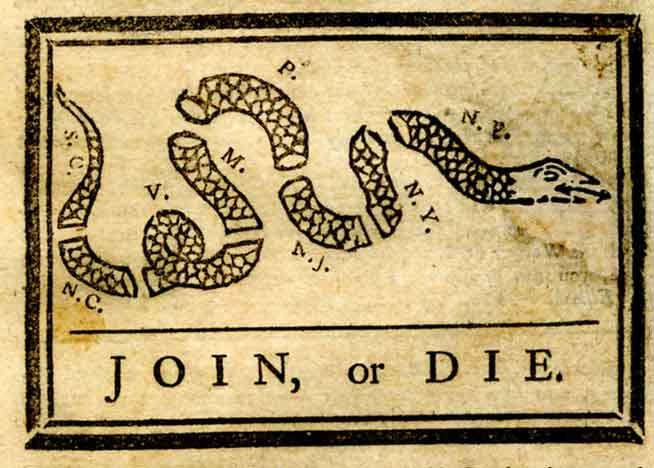
The significance of the Seven Years’ War in the British colonies (aka, the French and Indian War) was that the French and their Indian allies lost to a combined force of British, colonists, and Indian allies. However, Parliament decided that to thank the various indigenous populations for their support so Parliament created “Indian Country” west of the Appalachians in the Proclamation of 1763. Even though colonists fought for access to cheap, abundant lands, those were cut off by Parliament: colonists needed permission from the British and Indians before moving west of the Appalachians. So colonists ignored that reality and just started to expand out west.
There were other developments, such as colonists saw their volunteer military organizations as more representative of colonists than the Redcoats, the term “American” came into vogue thus suggesting that some in the colonies began overtly seeing themselves as something inherently different from their British counterparts. Parliament became frustrated with the colonial assemblies’ unwillingness to financially support the war. And, British debt skyrocketed. Empire’s are costly and what costs even more is controlling a population that in larger and larger numbers refuses to abide by the Navigation Acts, the Proclamation of 1763 or other decrees of colonial British officials.[11] Parliament was not too keen on raising taxes on people living in England in order to pay for troops to keep the colonists in America in line or even to support the French-Indian War. And then afterwards the American colonists were unwilling to pay taxes to retroactively pay for the war. Did they want a free lunch? That’s a debate for another edition.
From Empire to Revolt
So, Parliament proposed and passed a long series of taxes in its attempt to curb debt. This is the end of the period of Salutary or Benign Neglect. England was now fully focused on the colonies and the actions of Parliament and George III were not benign. For example, there was the Sugar Act of 1864. Customs agents were placed at ports of entry; smugglers could be tried outside of the jurisdiction where they were arrested and Bostonians responded by boycotting products as a protest to the tax.
One intellectual leader of the growing revolt was James Otis, Jr. Karla Gutierrez Iyer took a close look at him:[12]
James Otis, Jr. was born in what is now known as Barnstable, Massachusetts on February 5, 1725. He graduated from Harvard University in 1743 and obtained his master’s degree in law three years later. In 1745, he became a law clerk for Jeremiah Gridley, the best-known lawyer in Massachusetts at the time. Otis’ good work soon became notable and his professional dedication was admired by colleges like John Adams. In 1754, in absence of an Attorney General, Otis was appointed Advocate-General (“Attorney for the King”) in the vice admiralty court.[13] His job was to enforce Great Britain’s customs regulations and to prosecute smugglers. But, in 1761, Otis resigned to his position to instead support the merchants in opposition to extreme search warrants ordered by the British government, that in his view, violated the rights of the people. James Otis, Jr.’s intuitive understanding of law and political conviction to give voice to the marginalized colonist of Massachusetts, sparked up the American Revolution.
Otis was a pioneer defender of colonial rights in Massachusetts, who went from conservative loyalist to outspoken critic of British colonial policy. In 1754, the Superior Court started issuing “Writs of Assistance”, search warrants that allowed officials to enter and search a person’s house, business, or any property in which officials believed the person was storing unauthorized, unregistered merchandise. In defense of the merchants, now his clients, Otis argued that “a man’s house was his castle, and that it was only in cases of great public necessity that this privilege could be encroached on; that an officer might obtain a special warrant in the case of felonies…and only then under oath before the proper magistrate…” the court could order such search warrants.[14] He was convinced that the Writs of Assistance were an unconstitutional act of the British Parliament and was determined to put an end to such abuse.
Otis also believed in the principals of life, liberty, and property; that the colonists were “entitled to as ample rights, liberties, and privileges as the subjects of the mother country and in some respects to more.”[15] Since the beginning of the sixteenth century, colonial trade had become an important revenue source for Great Britain, especially during costly war times; “it had amounted to about 500,000 pounds in 1700 but by 1770 was worth 2,800,000 pounds.”[16] Despite this, the Crown continued to impose taxes for the mere purpose of profiting, to which James Otis wrote: “As it is agreed in all hands, the crown alone cannot impose them, we should be justifiable in refusing to pay them.” His arguments and opinions resonated with many people, contributed to a sentiment of unity and the urge to defend themselves from Great Britain’s tyranny. In 1761, by unanimous vote, Otis was elected the Boston representative to the General Court, a position that allowed him to speak for the people.
James Otis Jr. was an exemplar lawyer who sacrificed fortune and social status for the well of his fellow colonists. He believed in principles of liberty and equality. It is thanks to his pioneering efforts of democracy by advocating for merchants’ rights and giving voice to the marginalized people, that he helped start the movement for the American Revolution.
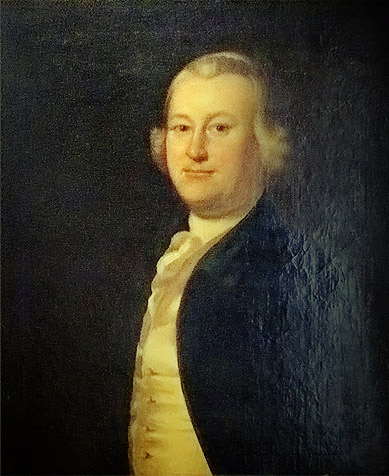
In 1765 Parliament passed the Quartering Act (aka the Mutiny Act), that required colonists to provide food and shelter to British soldiers. That same year saw the Stamp Act: requiring an official stamp to be placed on any official publication or document (newspapers, playing cards, birth certificates, marriage license, land transfers, etc). Bostonians vehemently opposed this measure and the Sons of Liberty arose in response and stirred up the working class. Small riots broke out. There was a heightened intensity of the boycott and the creation of the Stamp Act Congress.
The Stamp Act Congress wrote a petition to the Crown asking for a repeal of the Stamp Act as the Act was unconstitutional arguing that only elected representatives could raise taxes and Parliament were not elected representatives by the people in the colonies. George III denied the petition in the Declaratory Act saying that colonists were virtually represented as Parliament acted on everyone’s behalf, yet not everyone could vote. In 1766 Parliament repealed the Stamp Act, but taxes remained on sugar, tea, and other commodities. With the repeal of the Stamp Act, things settled down in the colonies and a renewed loyalty to the Crown appeared, yet the debt remained.
However, the next year a series of taxes on glass, lead, paper, tea, and paint arrived in the colonies, called the Townsend Acts. So the boycotts resumed, women formed the Daughters of Liberty who began spinning bees to create cloth and boycotting as well. British loyalty fell like the proverbial rock. Even George Washington joined one of those boycott clubs. He wrote to his supplier in England not to send anything taxed, except for paper.
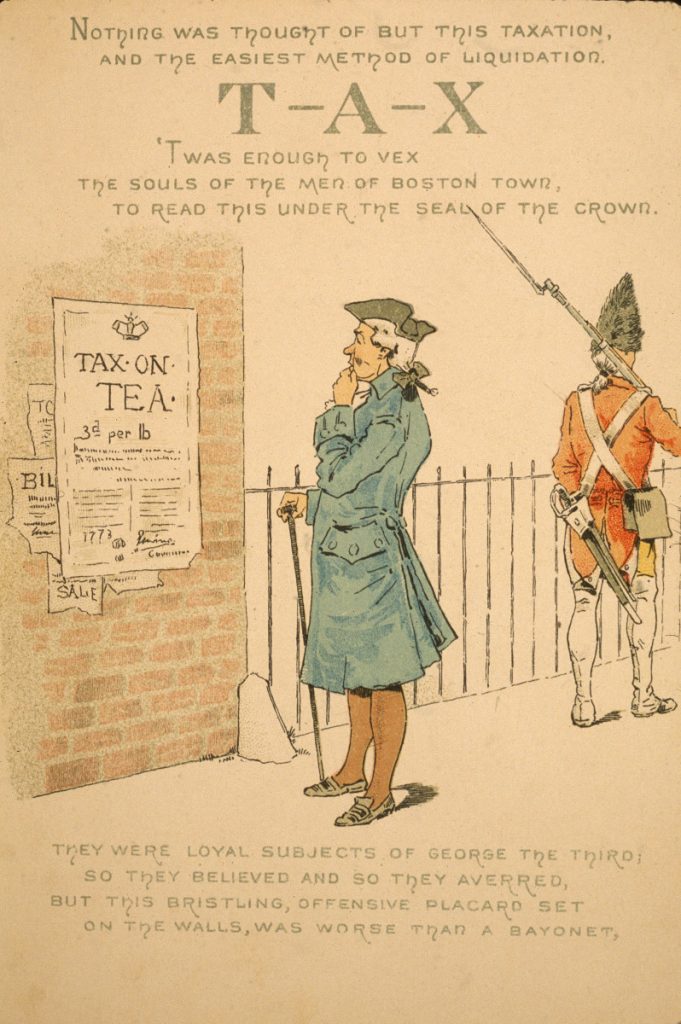
Parliament steps up enforcement of laws and collection of taxes. For example, the New York assembly is disbanded because it would not adhere to the Quartering Act. the Massachusetts Assembly was dissolved for publishing letters on boycotting British goods. Tension rose . . .
In 1770, about 2,000 Redcoats were stationed in Boston due to rioting and the rioting was due to the fact that those soldiers were also trying to compel the good residents of Boston to pay their taxes. Besides riots, good old fashioned fights broke out between mobs of loyalists and Americans as well as Americans and soldiers. Occasionally someone died such as when Christopher Seider, 11, was shot by a Customs officer named Ebenezer Richardson. Richardson lived adjacent to a loyalist’s store in which Americans were throwing rocks at when Richardson fired into the crowd, killing young Seider.
A month later, March, the tensions boiled over when a group of patriots confronted a young soldier outside a Custom House on a very cold and snowy night. Someone started throwing snowballs, insults (“no good, scoundrel, lobster, son of a bitch”) and then rocks. Then church bells began ringing -usually a warning of danger, such as a fire, calling all able bodied men to aid in the emergency. The soldier, named Hugh White, cried out for help. Captain Thomas Preston and several soldiers arrived and took up a defensive position in front of the Custom House door, fearing the mob might storm the building and steal the money stored inside. Colonists then attacked the soldiers with blunt weapons, such as clubs and in the melee a soldier discharged his weapon, which resulted in other soldiers following suit. Five colonists died including a freeman, Crispus Attucks. The Redcoats wounded six colonists.
Paul Revere, who did not witness the attack, created the famous etching. Note how the British troops are instigating the attack (the captain’s arm is at the fire position), the colonists are unarmed, and Attucks is not present. Instead Revere inserted a puppy. Maybe for sympathy? The British are even shoot out puppies!
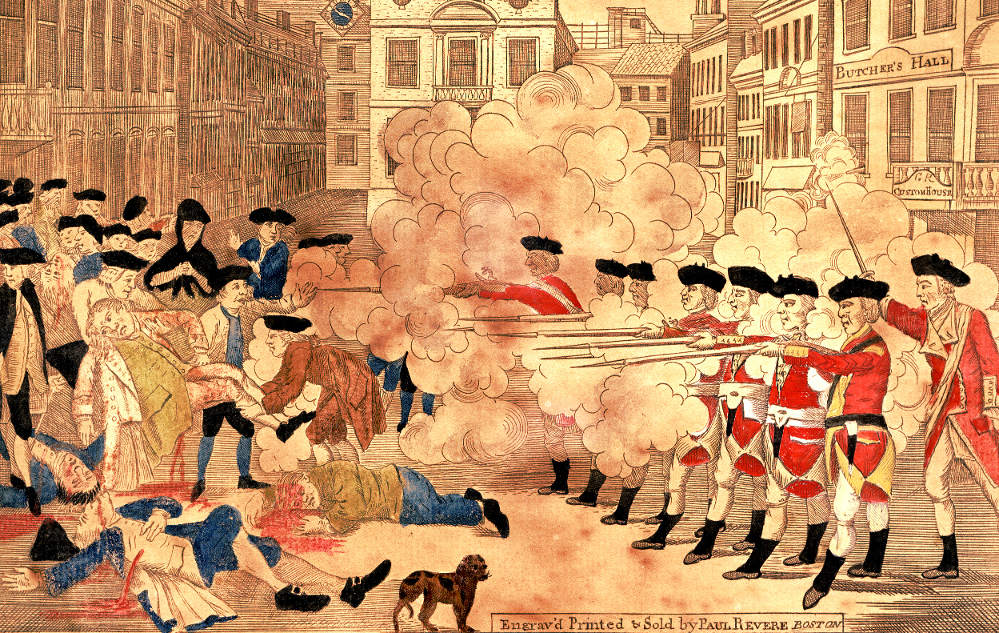
The soldiers will be arrested and tried for a series of charges. Co-author of the Declaration of Independence and the second President of the US John Adams will act as an attorney for the defense. He believed that the soldiers needed a strong defense or else George III would dismiss the colonial court. Abigail Adams thought doing so would end his career.
Shortly thereafter news from England arrived alerting the colonists that the Townsend Acts had been rescinded.
That calmed tensions. And things seemed to go back to normal, again. Until 1773 when Parliament tried to get the colonists to pay a tax even if that meant reducing the price of a taxed good. The Tea Act of 1773 gave the East India Company a monopoly to sell tea in the colonies. American merchants were prohibited from selling tea. Smugglers were strictly dealt with. Tea prices dropped but the Act was boycotted on principle.
Tea was something the British consumed both as a custom and ceremoniously. Tea enhanced one’s Britishness. Tea was hot and contained caffeine. Daughters of Liberty looked for a replacement that was not taxed. It had to be hot, contained caffeine. The option was coffee. The first time that George Washington tried coffee, without sugar as sugar was taxed, he joked that he was tempted to become a Loyalists. So coffee became a symbol of the patriots just like tea drinking became a symbol of Loyalists.
Shortly thereafter, a group of colonists stormed ships in the Boston harbor and threw cases of tea overboard. This level of protest also demonstrates their different understanding then us today in private property. Parliament was not pleased so, they issued the Coercive or Intolerable Acts. Boston Harbor would be permanently closed; private homes would be used to quarter British troops; the colony’s governing council would be appointed by the Crown; British officials could move all trials out of the colonies to England.
Colonists rallied around Boston. The American response to the Intolerable Acts included the Committees of Correspondence and Committees of Safety. The former were letters created to keep colonies informed on British activities while the latter called for preparation for a possible military response. In the Fall of 1774 representatives from the various colonies met in the City of Brotherly love in what became the first Continental Congress.
John Adams, a representative from Massachusetts, was ahead of the other colonists. His to-do list, which he drafted en route to Philadelphia, included coin money and raise taxes to maintain an army, create a military alliance with France and Spain and draft a “Declaration of Independency.”
The result of the first Continental Congress was to issue the Declaration of Rights and Grievances which promised obedience to George III but denied Parliament’s power to tax the colonies. The representatives also established the “Continental Association to prohibit importation of English goods and later the export of American goods to England.”[17]
So colonies began storing weapons -arsenals. In Concord, Massachusetts for example. And other needed supplies if war befell the colonists. British troops viewed those supplies and weapons threats so on April 19th, 1775 some Redcoats marched on Lexington and Concord to seize those arsenals. Massachusetts irregular troops attacked the British and shots were exchanged from Boston to the arsenals and back to Boston. Those local militias eventually congeal into the Continental Army under George Washington.
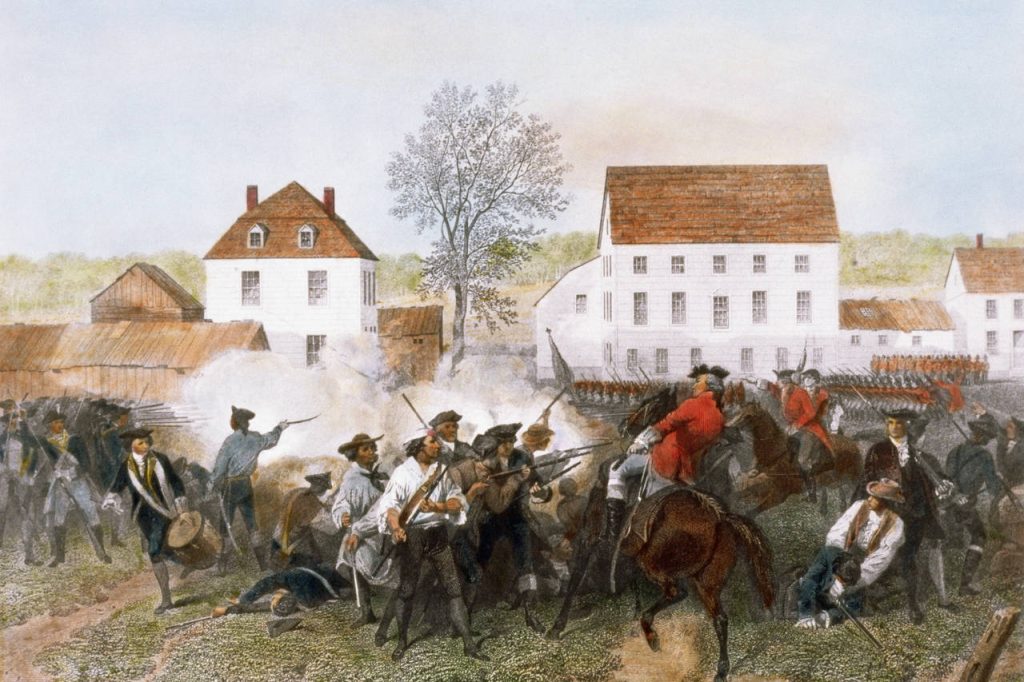
Two months later British troops invade Boston and American troops take defensive positions atop Bunker Hill. British stormed the hill but due to a lack of ammunition the Americans had to hold off on firing until the British got pretty close. I can only guess how anxious the American troops were as the British got closer and closer. Because the Americans fired at the British at such close proximity, British casualties were high, about 50%. When the Americans ran out of ammunition they fled the battlefield and so the British claimed victory. Both sides deemed the battle a success.
News of the British invasion spread in part by the famous Paul Revere but also by a teenager named Sybil Ludington. Kathleen Alvarenga (Summer 2024) looked at Ludington:
I found Sybil Ludington often referred to as the female Paul Revere. She was most significantly known for playing a frequently overlooked role in the American Revolutionary War. She was Born on April 5, 1761, in Fredericksburg, New York and was the eldest daughter of Colonel Henry Ludington, a local militia commander.[18] Her notable and courageous actions on the night of April 26, 1777, have become legendary. She was able to demonstrate the importance of female contribution to fight for American independence.[19]
Ludington at only 16 years old, embarked on a dangerous night ride to inform colonial forces of a British attack on Danbury, Connecticut. The British attacked the town, destroying supplies crucial to the colonial army. With her father’s men scattered across a wide area, it became Ludington’s responsibility to summon them. She rode alone through the darkness, covering roughly 40 miles, twice the distance of Paul Revere’s famous ride. Her journey took her through unfamiliar territory, under threat from British soldiers, loyalists, and bandits.[20]
Ludington’s ride successfully gathered the militia who only after, mustered the courage to engage the British troops. Although the raid on Danbury resulted in the destruction of countless supplies, the militia’s response, in part thanks to her efforts, helped to diminish any continuing British advancements in the region. Ludington’s ride demonstrated more than just bravery; it also demonstrated the importance of the female role during wartime efforts. She challenged the traditional narrative that women should be excluded from any contributions to the war. Therefore becoming an inspiration to young women starving for change.[21]”

But it was not until the summer of 1776 that the relationship between the American colonists and England officially was severed. What took so long? First, the colonists did not want to lose their Britishness. Second, they did not want to act prematurely. Three, they felt they may not have been ready and so they were afraid of losing. But in 1776 the British introduced foreign troops -the Hessians. And so Americans saw this escalation as a new turn in the war.
But the big push came from Thomas Paine and his pamphlet Common Sense. Paine argued that England was too far away and too small to control an entire continent and that England did not support liberty and equality. He attacked George III and the monarchy. And that America was not breaking away from England but rather saving English liberties from a corrupt monarchical system.
That was it.
The second Continental Congress produced the Declaration of Independence. Authored by John Adams, Thomas Jefferson, Ben Franklin, Roger Sherman and Roger Livingston, the Declaration of Independence attacked George III. It’s a syllogism. The purpose of government is to protect the rights of people. If government fails to do so, the people have the right to change the government. Then the authors catalog the sins of George III and thus these united colonies ought to be free and independent from the crown.
There would not be, there could not be, any turning back this time.
Some of my Fall 2019 students researched and wrote about “sacrifice” during the colonial period. Here are three essays.
By Daniel Newton:
From the 17th century to 1765, American colonists experienced a myriad of hardships in the process of settling the undeveloped landmass of America. American colonists as a group had the unique undertaking of saying farewell to their families and support networks in the Old World, with their previous lives and kin nearly a two month sail away. This essay will begin with an examination of the Jamestown colonists, followed by an analysis of the Pilgrims.
Jamestown was established in 1607 by a group of less than 200 Englishmen. The founding of this venture was sponsored by the Virginia Company of London, with the main objective being to find gold.[22] The men, feeling pressure from this directive, did not farm to stock up food for the Winter. The aftermath of this resulted in starvation and the spreading of disease such as malaria, with less than thirty percent of the original group surviving.[23] The Jamestown colonists gave up every aspect of their old lives to start from scratch in an undeveloped land, were subjected to back breaking labor and starvation, on top of watching over half of their group die. Sacrifice for the Jamestown colonists meant enduring hardships and toiling forward to carve a greater place for themselves, both economically and culturally, in America.
The Pilgrims were a group of separatist Puritans who immigrated to America in search of religious freedom. The outspoken separatist Puritans faced ridicule and suppression for their extreme beliefs in England, and as such sought other countries in which they could live their lives according to their creed. These pilgrims from the area of Nottinghamshire, England first attempted to settle in Holland. After years of hardship there, with the backing of the Virginia Company, members of this group set off to immigrate to Virginia. The merchant ship Mayflower was blown off course to Cape Cod, and the group settled there. The first winter these colonists experienced saw about half the group die. After this tribulation, through much toil, the Pilgrims were able to develop the land and experienced bountiful harvests, from which their settlement expanded and grew. In fact, tobacco cultivation was so successful that the pilgrims were able to get goods exported from England for their use.[24] The Pilgrim’s experience of religious ііpersecution, harsh winters, death and toil were all undergone in order to create an environment where their families could grow and prosper aligned with their religious beliefs and way of life. Sacrifice for the pilgrims encapsulated this sentiment, and was taken toward their goal of building a righteous, upstanding religious society.
Early colonists in America sacrificed by giving up their old lives and family to build and toil in the New World in order to build a better life for themselves. These early colonists were pushed by economic hardship and religious persecution in the Old World to move to America. Once there, they faced harsh winters, starvation, disease, and back breaking work. These colonists sustained these trials and pushed through to achieve success in tobacco cultivation, and the colonies grew and prospered as a result.
By Chinwe Obiokeke:
With the Return of John Smith to Virginia, America’s northern coast was explored further with a continued campaign for increased American colonization. When John Smith departed from America, his departure was followed by a season of starvation for the American colonies. For instance, the 1609-1610 winter plunged Jamestown’s population from at least 500 individuals to a mere 60 people. These frantic colonists ate roots, rats, and dogs. There were some even more grisly situations where people ate one another due to starvation in their struggle to remain alive. Another instance is Virginia, which struggled to get back to a healthy life. This countryside, at some point, appeared devoid of life and profitable exploits, colonization had led to extreme exploitation of its resources.[25] .
American colonists were also subdued with unbearable laws. For instance, Sir Thomas Dale, a deputy governor, attempted to whip the already suffering colonists back to order using severe legal rules. The death penalty was imposed for crimes such as desertion and disobedience, robbing gardens, and sex offenses. It was a requirement for everyone to work forcefully in big plantations with little or no pay. For example, laborers in tobacco plantations beard tremendous pain and backbreaking amounts of work. In Virginia, African Americans were enslaved, and some unemployed women and men in London were transported to Virginia for services that went for seven and four years. These laborers, although known as indentured servants, did similar work to those of slaves in the American colonists. Similar to Jamestown, conditions were worse and grim as half of the population of the colonists died.[26]
The American colonists fought Indians, cleared land, and built homes to make lives for their families. They also had different daily concerns as compared to people back in Britain. However, those in Britain believed that the primary purpose of having a colony was to provide service to its mother country. Therefore, citizens in those colonies were treated differently from those back home. Britain demanded unique or special taxes on American colonists. Britain ordered the American colonies to provide food to the British troops. These troops also lived in their homes or houses. The reason given behind these troops living in colonist’s homes was that they were to provide protection to the people. The British government also demanded that the American colonists should pay more or higher taxes. The American colonists were not involved in this decision and were the main reason why they refused this taxation even though they might have agreed. The American colonists were denied the right to participate in a vote for their taxes, similar to what was done by the people residing in Britain. No colonist was allowed to work in British parliaments and as a result, protested being taxed without having parliamentary representation. An example is the 1764 Sugar Act approved by the British parliament. This Act set taxes on products such as wine, coffee, and sugar imported to American colonists. The rejection of this legislation by the American colonists led to four thousand British soldiers being brought into Boston. The American colonists hated these solders as they controlled their houses and the streets. This added burden and suffering led to more violence.[27]
It is apparent that the American colonies experienced a spectrum of cultural and social challenges. There were colonial assemblies, and the colonists were governed with rules or labor codes that continued human suffering.
By Phythias Young:
This essay will examine early American colonists during the time periods of 1600 and 1765, and the sacrifice they made in order to colonize a new land. Sacrifices made by the American colonist include convenience, food, clothing and even life itself. We must understand that these settlers where traveling to a completely new continent and knew little of its nature.
Losing the convenience of knowing their homeland I would say was the first sacrifice made by the American colonists. As I stated earlier, this was an all-new area for them. They knew little of the climate and the terrain. When leaving your homeland, all previous knowledge of your current way of life becomes null and void. This was significant because when the colonists first settled, the land they came across was swampland and filled with disease, this was something they were not use to.[28] This would lead into one of the biggest sacrifices made by the American colonists, death.
Loss of life is a major sacrifice that the American colonists dealt with upon arriving in Jamestown. Most of these deaths happened during what John Smith referred to as the Staving Time.[29] With little knowledge of how to cultivate the land, the colonists had little food and loss many lives during winter months. Instead of leaving and going back to their original homeland during these hard times, the colonists chose to stay and endure the harsh weather. The only person there with experience in agriculture was John Smith, whom later left do to an accident.
Some people, due to the severe climate and scarcity of resources, sacrificed their own humanity. Times were so rough that some people turned to cannibalism to survive, eating the dead corpses of people who didn’t survive. In one particular case, a man even killed his own wife just so he could eat.[30] These are very extreme cases and does not represent all the of the American colonist, but it does show the great lengths they were willing to go through.
Modern day to day items used for survival were also sacrificed for the colonists to survive. These ranged from agricultural animals such as hogs, hens, goats, sheep and horses to weapons such as clubs and arrows. Anything that had any type of value, was traded in order for them to survive.[31] This shows how almost everything they possessed was being taken away from them day by day. This depleted their resources and only dug them further into the hole they were trying so desperately to escape from.
Looking back, the American colonists faced many situations and their ambition to settle in a new territory was surely tested. Even though we have covered many situations were sacrifices were made, I ultimately believe the American colonists were willing to sacrifice everything.
A special thanks to my students Kathlees Alvarenga, Daniel Newton, Chinwe Obiokeke, Pythias Young and Karla Gutierrez Iyer for their essays on sacrifice during the colonial era. Their interests and insights demonstrate how students can add value to OER projects.
As with the other chapters, I have no doubt that this chapter contains inaccuracies. Please point them out to me so that I may make make this chapter better. I am looking for contributors so if you are interested in adding anything at all, please contact me at james.rossnazzal@hccs.edu.
- Sources for this chapter include notes I've taken on books I've read, conferences I've attended, my lectures and presentations I've given, which is why there are so few citations. My notes do not say where the original contributions came from, except where noted by a proper citation. ↵
- https://avalon.law.yale.edu/18th_century/albany.asp ↵
- Ms. Doucet was a student of mine in US History in the Fall of 2019. ↵
- Gregory Moore, "French and Indian War." In Dictionary of American History, 3rd ed., edited by Stanley I. Kutler, 468-471. Vol. 3. New York, NY: Charles Scribner's Sons, 2003. Gale In Context: U.S. History (accessed October 20, 2019). https://link-gale-com.libaccess.hccs.edu/apps/doc/CX3401801614/UHIC?u=txshracd2512&sid=UHIC&xid=3c05d6d7. ↵
- Ibid. ↵
- Chapters I-IV. THE AMERICAN YAWP, May 22, 2013. http://www.americanyawp.com/text/05-the-american-revolution/. ↵
- Robert Longley, "The Albany Plan of Union." ThoughtCo. https://www.thoughtco.com/the-albany-plan-of-union-4128842 (accessed October 20, 2019). ↵
- "Copy of Ben Franklin's newspaper with 'Join or Die' political cartoon up for auction." Philadelphia Inquirer [Philadelphia, PA], July 23, 2018. Gale General OneFile (accessed October 20, 2019). https://link-gale-com.libaccess.hccs.edu/apps/doc/A547403739/ITOF?u=txshracd2512&sid=ITOF&xid=fdc6f889. ↵
- Ibid. ↵
- Ibid. ↵
- Originally attributed to http://home.earthlink.net/~gfeldmeth/fandiwar.html (Last accessed 6 Mar 2003) ↵
- Ms. Iyer was a student of mine in US History, Fall of 2019. ↵
- "James Otis." American Law Review, vol. 3, no. 4, July 1869, p. 641-665. HeinOnline. http://digitalcollections.nypl.org/items/21928a60-c60f-012f-3ba7-58d385a7bc34. ↵
- Ibid. ↵
- Otis, James, 1725-1783. The Rights of the British Colonies Asserted and Proved By James Otis, Esq; [Four Lines in Latin from Virgil]. Boston: Printed and sold by Edes and Gill, in Queen-Street, 1764. ↵
- Howard, Zinn, A People’s History of the United States. HarperCollins Publishers, 2016, p. 43. ↵
- Originally attributed to http://home.earthlink.net/-gfeldmeth/lec.prerev.html Last accessed 6 Mar 2003 ↵
- Lewis, Mack. “GILD FIGHTER. HERO.” Accessed June 28, 2024. https://0-search-ebscohost-com.librus.hccs.edu/login.aspx?direct=true&db=mih&AN=163206639&site=ehost-live&scope=site ↵
- Brown, Drollene. “A Spectacular Ride” Accessed June 28, 2024. https://0-search-ebscohost-com.librus.hccs.edu/login.aspx?direct=true&db=mih&AN=112986538&site=ehost-live&scope=site. ↵
- Landber, Patricia. “A Courageous Ride for Freedom.” Accessed June 28, 2024. https://0-search-ebscohost-com.librus.hccs.edu/login.aspx?direct=true&db=prh&AN=37171242&site=ehost-live&scope=site ↵
- Ibid ↵
- “Jamestown Settlement and the ‘Starving Time.’” ushistory.org. Independence Hall Association. Accessed October 13, 2019. http://www.ushistory.org/us/2c.asp. ↵
- McGaughy. American Perspectives: Readings in American History. Vol. 1. Pearson, 2006. ↵
- “Plymouth’s Pilgrims”. Watson, Harry L., and Jane Elizabeth Dailey. Building the American Republic. Chicago: The University of Chicago Press, 2018. Accessed October 13, 2019. https://press.uchicago.edu/sites/buildingtheamericanrepublic/index.html. ↵
- Watson, Harry L., and Jane Elizabeth Dailey. Building the American Republic, Volume 1: A Narrative History to 1877.Vol. 1. University of Chicago Press, 2018. ↵
- Faragher, John Mack, Ed. The encyclopaedia of colonial and revolutionary America. Facts on file, 1990. ↵
- McGaughy, Kent. "American Perspectives: Readings In American History.". Amazon.Com, Last modified 2008. https://www.amazon.com/American-Perspectives-Readings-History-Community/dp/0555038378. ↵
- John Smith, The Generall Historie of Virginia, New England & The Summer Isles (Glasgow, Scotland: James MacLehose and Sons, 1907), Vol. 1: 203–05 ↵
- Ibid. ↵
- Ibid. ↵
- Ibid. ↵
